
Chapter 13 - 1
Chapter 13: Applications and
Processing of Ceramics
ISSUES TO ADDRESS...
• How do we classify ceramics
?
• What are some applications of ceramics
?
• How is processing of ceramics different than for metals
?

Chapter 13 - 2
Glasses
Clay
products
Refractories
Abrasives
Cements
Advanced
ceramics
-optical
-
composite
reinforce
-
containers/
household
-whiteware
-
structural
-bricks for
high T
(furnaces)
-sandpaper
-
cutting
-
polishing
-composites
-
structural
-engine
rotors
valves
bearings
-sensors
Adapted from Fig. 13.1 and discussion in
Section 13.2-8, Callister & Rethwisch 8e.
Classification of Ceramics
Ceramic Materials

Chapter 13 - 3
tensile
force
A
o
A
d
die
die
• Die blanks:
-- Need wear resistant properties!
• Die surface:
-- 4
m
m polycrystalline diamond
particles that are sintered onto a
cemented tungsten carbide
substrate.
-- polycrystalline diamond gives uniform
hardness in all directions to reduce
wear.
Adapted from Fig. 11.8(d),
Callister & Rethwisch 8e.
Courtesy Martin Deakins, GE
Superabrasives, Worthington,
OH. Used with permission.
Ceramics Application: Die Blanks
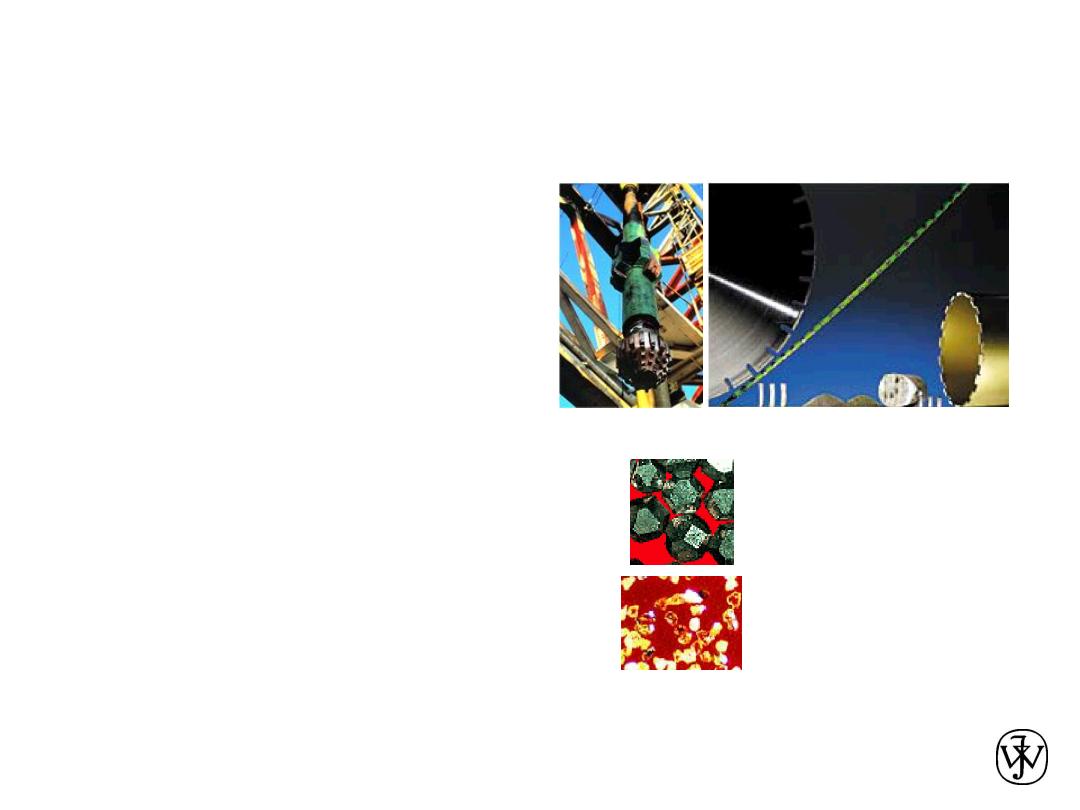
Chapter 13 - 4
• Tools:
-- for grinding glass, tungsten,
carbide, ceramics
-- for cutting Si wafers
-- for oil drilling
blades
oil drill bits
Single crystal
diamonds
polycrystalline
diamonds in a resin
matrix.
Photos courtesy Martin Deakins,
GE Superabrasives, Worthington,
OH. Used with permission.
Ceramics Application:
Cutting Tools
• Materials:
-- manufactured single crystal
or polycrystalline diamonds
in a metal or resin matrix.
-- polycrystalline diamonds
resharpen by microfracturing
along cleavage planes.
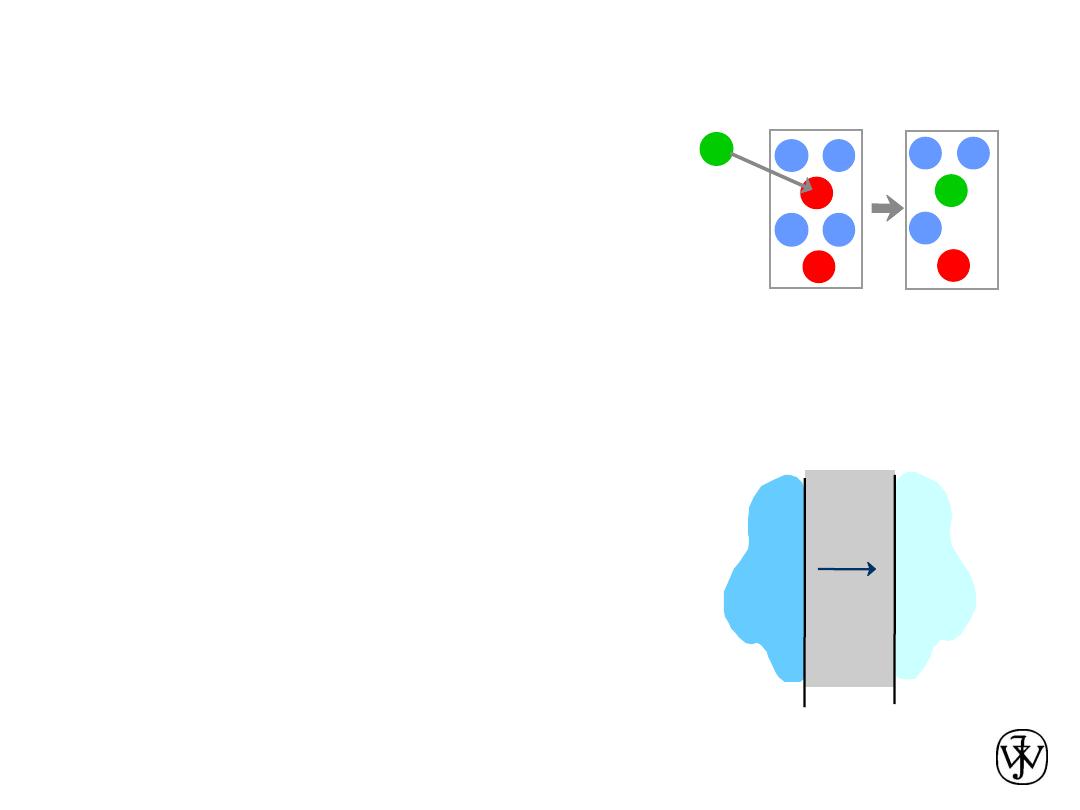
Chapter 13 - 5
• Example:
ZrO
2
as an oxygen sensor
• Principle:
Increase diffusion rate of oxygen
to produce rapid response of sensor signal to
change in oxygen concentration
Ceramics Application: Sensors
A substituting
Ca
2+
ion
removes a
Zr
4+
ion and
an
O
2-
ion.
Ca 2+
• Approach:
Add Ca impurity to ZrO
2
:
-- increases O
2-
vacancies
-- increases
O
2-
diffusion rate
reference
gas at fixed
oxygen content
O
2-
diffusion
gas with an
unknown, higher
oxygen content
-
+
voltage difference produced!
sensor
• Operation:
--
voltage difference produced when
O
2-
ions diffuse from the external
surface through the sensor to the
reference gas surface.
-- magnitude of voltage difference
partial pressure of oxygen at the
external surface

Chapter 13 - 6
• Materials to be used at high temperatures (e.g., in
high temperature furnaces).
• Consider the Silica (SiO
2
) - Alumina (Al
2
O
3
) system.
• Silica refractories - silica rich - small additions of alumina
depress melting temperature (phase diagram):
Fig. 12.27, Callister &
Rethwisch 8e. (Fig. 12.27
adapted from F.J. Klug and
R.H. Doremus, J. Am. Cer.
Soc. 70(10), p. 758, 1987.)
Refractories
Composition (wt% alumina)
T(ºC)
1400
1600
1800
2000
2200
20
40
60
80
100
0
alumina
+
mullite
mullite
+ L
mullite
Liquid
(L)
mullite
+
crystobalite
crystobalite
+ L
alumina + L
3Al
2
O
3
-2SiO
2

Chapter 13 - 7
Advanced Ceramics:
Materials for Automobile Engines
• Advantages:
– Operate at high
temperatures
– high
efficiencies
– Low frictional losses
– Operate without a cooling
system
– Lower weights than
current engines
• Disadvantages:
– Ceramic materials are
brittle
– Difficult to remove internal
voids (that weaken
structures)
– Ceramic parts are difficult
to form and machine
• Potential candidate materials: Si
3
N
4
, SiC, & ZrO
2
• Possible engine parts: engine block & piston coatings

Chapter 13 - 8
Advanced Ceramics:
Materials for Ceramic Armor
Components:
-- Outer facing plates
-- Backing sheet
Properties/Materials:
-- Facing plates -- hard and brittle
— fracture high-velocity projectile
— Al
2
O
3
, B
4
C, SiC, TiB
2
-- Backing sheets -- soft and ductile
— deform and absorb remaining energy
— aluminum, synthetic fiber laminates
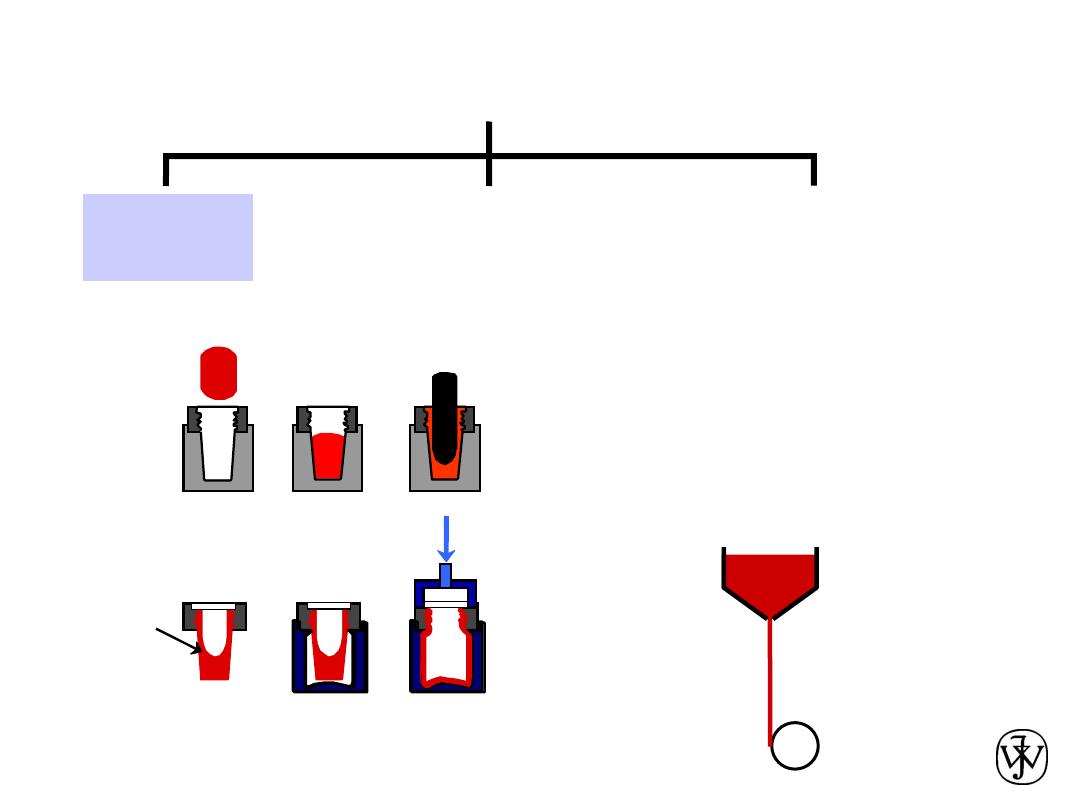
Chapter 13 - 9
• Blowing of Glass Bottles:
GLASS
FORMING
Adapted from Fig. 13.8, Callister & Rethwisch 8e. (Fig. 13.8 is adapted from C.J.
Phillips, Glass: The Miracle Maker, Pittman Publishing Ltd., London.)
Ceramic Fabrication Methods (i)
Gob
Parison
mold
Pressing
operation
Suspended
parison
Finishing
mold
Compressed
air
• Fiber drawing:
wind up
PARTICULATE
FORMING
CEMENTATION
-- glass formed by application of
pressure
-- mold is steel with graphite
lining
• Pressing:
plates, cheap glasses

Chapter 13 - 10
Sheet Glass Forming
• Sheet forming
– continuous casting
– sheets are formed by floating the molten glass on a pool of
molten tin
Adapted from Fig. 13.9,
Callister & Rethwisch 8e.

Chapter 13 - 11
• Quartz is
crystalline
SiO
2
:
• Basic Unit:
Glass is noncrystalline (
amorphous)
• Fused silica is SiO
2
to which no
impurities have been added
• Other common glasses contain
impurity ions such as Na
+
, Ca
2+
,
Al
3+
, and B
3+
(soda glass)
Adapted from Fig. 12.11,
Callister & Rethwisch 8e.
Glass Structure
Si0 4 tetrahedron
4-
Si
4+
O
2
-
Si
4+
Na
+
O
2
-

Chapter 13 - 12
•
Specific volume
(1
/r
) vs Temperature (T):
•
Glasses
:
-- do not crystallize
-- change in slope in spec. vol. curve at
glass transition temperature
,
T
g
-- transparent - no grain boundaries to
scatter light
•
Crystalline materials
:
-- crystallize at melting temp,
T
m
-- have abrupt change in spec.
vol. at T
m
Adapted from Fig. 13.6,
Callister & Rethwisch 8e.
Glass Properties
T
Specific volume
Supercooled
Liquid
solid
T
m
Liquid
(disordered)
Crystalline
(i.e., ordered)
T
g
Glass
(amorphous solid)

Chapter 13 - 13
Glass Properties: Viscosity
•
Viscosity,
h
:
-- relates shear stress (
) and velocity gradient (dv/dy):
h
has units of (Pa-s)
dy
dv /
h
velocity gradient
dv
dy
glass
dv
dy

Chapter 13 - 14
V
isc
os
ity
[Pa
-s]
1
10
2
10
6
10
10
10
14
200
600 1000 1400 1800
T
(ºC)
Working range:
glass-forming carried out
annealing point
T
melt
strain point
• Viscosity decreases with T
Adapted from Fig. 13.7, Callister & Rethwisch
8e. (Fig. 13.7 is from E.B. Shand,
Engineering Glass, Modern Materials, Vol. 6,
Academic Press, New York, 1968, p. 262.)
Log Glass Viscosity vs. Temperature
• fused silica: > 99.5 wt% SiO
2
• soda-lime glass: 70% SiO
2
balance Na
2
O (soda) & CaO (lime)
• Vycor: 96% SiO
2
, 4% B
2
O
3
• borosilicate (Pyrex):
13% B
2
O
3
, 3.5% Na
2
O, 2.5% Al
2
O
3
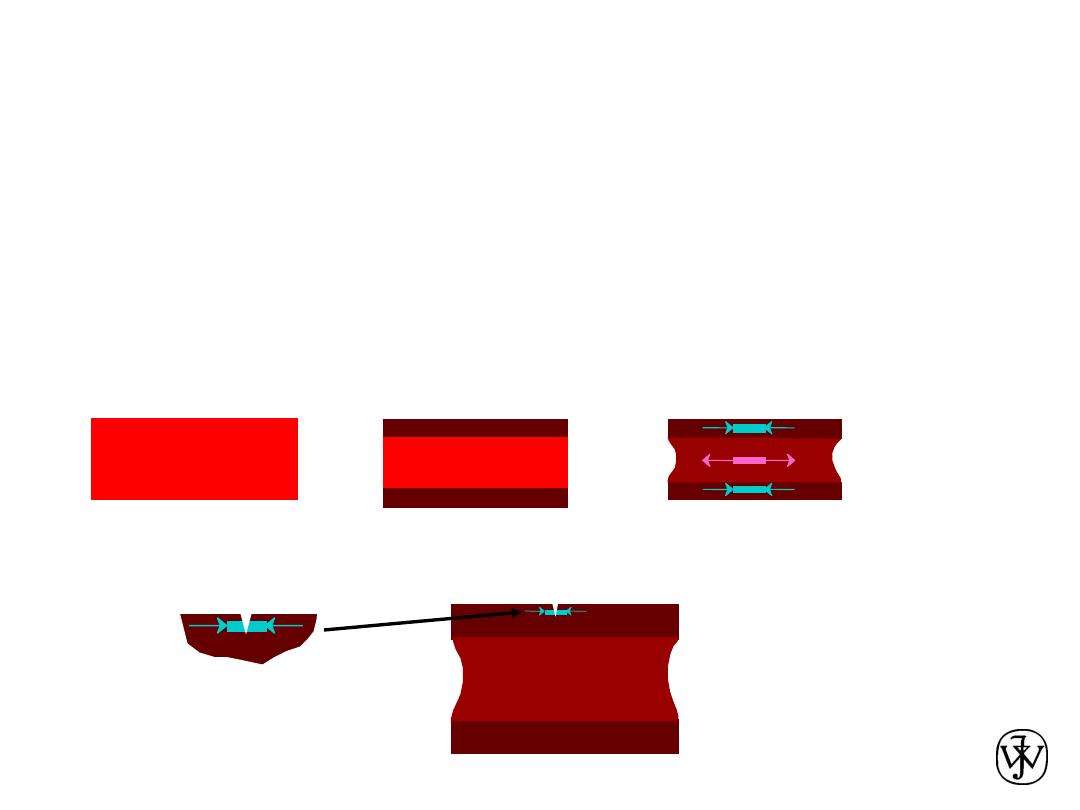
Chapter 13 - 15
•
Annealing
:
-- removes internal stresses caused by uneven cooling.
•
Tempering
:
-- puts surface of glass part into compression
-- suppresses growth of cracks from surface scratches.
-- sequence:
Heat Treating Glass
at room temp.
tension
compression
compression
before cooling
hot
initial cooling
hot
cooler
cooler
-- Result: surface crack growth is suppressed.

Chapter 13 - 16
• Ceramic Fabrication
techniques:
-- glass forming (pressing,
blowing, fiber drawing).
-- particulate forming
(hydroplastic forming, slip
casting, powder pressing, tape
casting)
-- cementation

Chapter 13 - 17
• Mill (grind) and screen constituents: desired particle size
• Extrude this mass (e.g., into a brick)
•
Dry
and
fire
the formed piece
ram
billet
container
container
force
die holder
die
A
o
A
d
extrusion
Adapted from
Fig. 12.8(c),
Callister &
Rethwisch 8e.
Ceramic Fabrication Methods (iia)
GLASS
FORMING
PARTICULATE
FORMING
CEMENTATION
Hydroplastic forming:

Chapter 13 - 18
• Mill (grind) and screen constituents: desired particle size
• Slip casting operation
•
Dry
and
fire
the cast piece
Ceramic Fabrication Methods (iia)
solid component
Adapted from Fig.
13.12, Callister &
Rethwisch 8e. (Fig.
13.12 is from W.D.
Kingery, Introduction
to Ceramics, John
Wiley and Sons,
Inc., 1960.)
hollow component
pour slip
into mold
drain
mold
“green
ceramic”
pour slip
into mold
absorb water
into mold
“green
ceramic”
GLASS
FORMING
PARTICULATE
FORMING
CEMENTATION
Slip casting:
• Mix with water and other constituents to form
slip

Chapter 13 - 19
Typical Porcelain Composition
(50%) 1.
Clay
(25%) 2.
Filler
– e.g. quartz (finely ground)
(25%) 3.
Fluxing agent
(Feldspar)
-- aluminosilicates plus K
+
, Na
+
, Ca
+
-- upon firing - forms low-melting-temp. glass
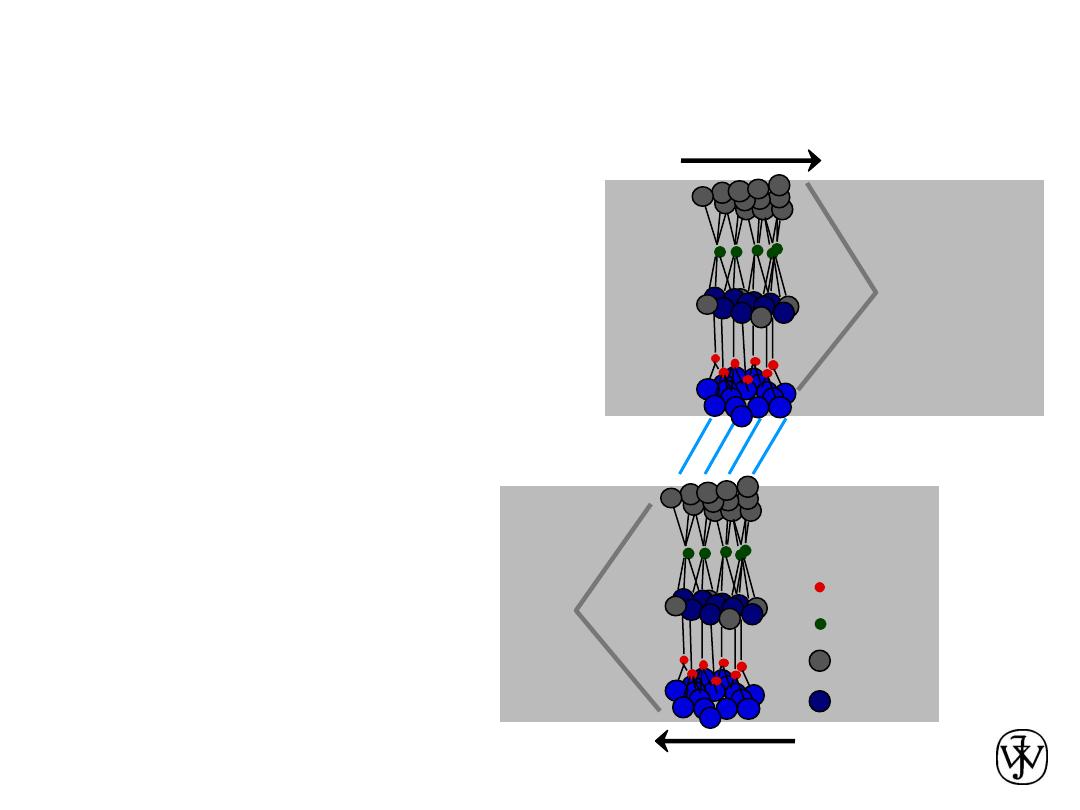
Chapter 13 - 20
• Clay is inexpensive
• When water is added to clay
-- water molecules fit in between
layered sheets
-- reduces degree of van der Waals
bonding
-- when external forces applied
– clay
particles free to move past one
another
– becomes hydroplastic
• Structure of
Kaolinite Clay:
Adapted from Fig. 12.14, Callister &
Rethwisch 8e. (Fig. 12.14 is adapted from
W.E. Hauth, "Crystal Chemistry of
Ceramics", American Ceramic Society
Bulletin, Vol. 30 (4), 1951, p. 140.)
Hydroplasticity of Clay
weak van
der Waals
bonding
charge
neutral
charge
neutral
Si
4+
Al
3
+
-
OH
O
2-
Shear
Shear
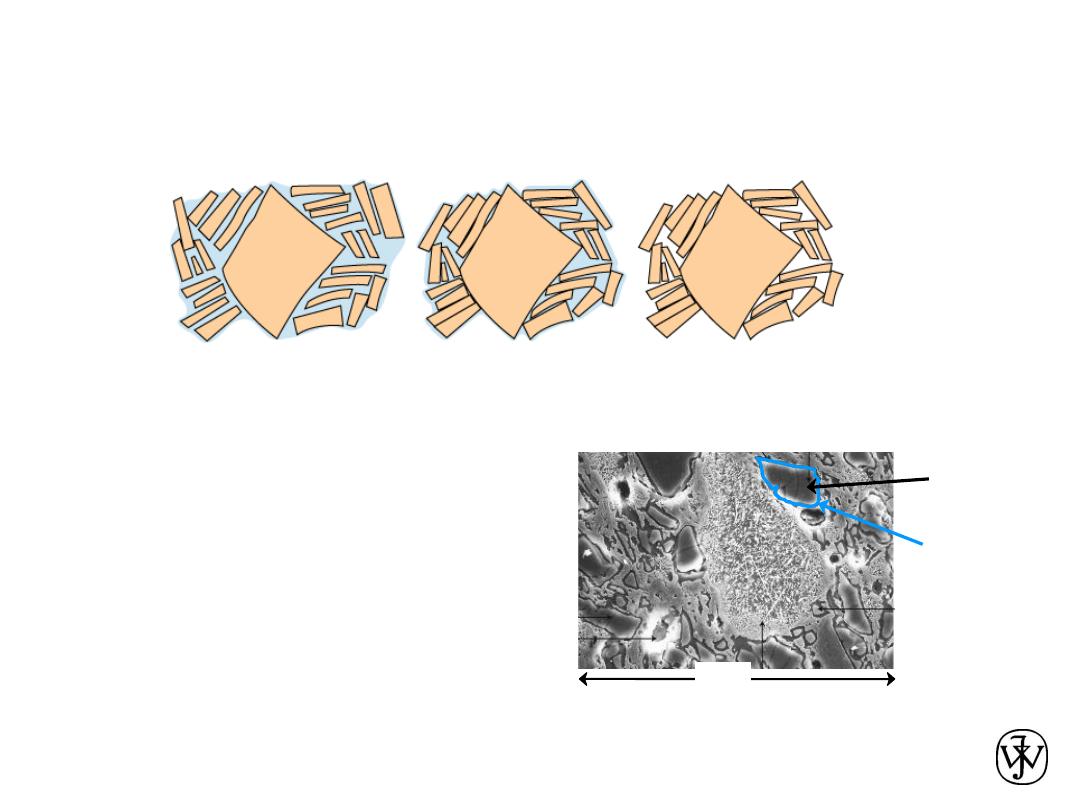
Chapter 13 - 21
•
Drying
:
as water is removed - interparticle spacings decrease
– shrinkage .
Adapted from Fig.
13.13, Callister &
Rethwisch 8e. (Fig.
13.13 is from W.D.
Kingery, Introduction
to Ceramics, John
Wiley and Sons,
Inc., 1960.)
Drying and Firing
Drying too fast causes sample to warp or crack due to non-uniform shrinkage
wet body
partially dry
completely dry
•
Firing
:
-- heat treatment between
900-1400
ºC
--
vitrification
: liquid glass forms
from clay and flux
– flows
between SiO
2
particles. (Flux
lowers melting temperature).
Adapted from Fig. 13.14, Callister & Rethwisch 8e.
(Fig. 13.14 is courtesy H.G. Brinkies, Swinburne
University of Technology, Hawthorn Campus,
Hawthorn, Victoria, Australia.)
Si0
2
particle
(quartz)
glass formed
around
the particle
m
ic
rograph
of
porc
elain
70
m
m
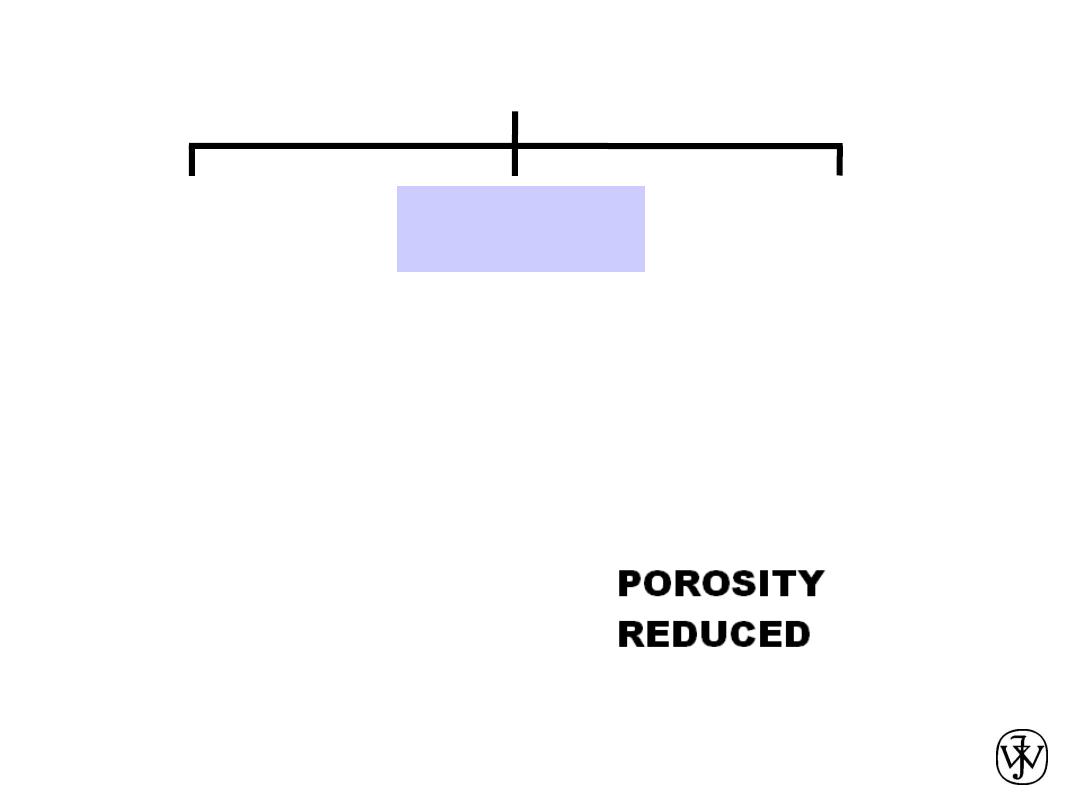
Chapter 13 - 22
Powder Pressing
:
used for both clay and non-clay compositions.
• Powder (plus binder) compacted by pressure in a mold
--
Uniaxial compression
- compacted in single direction
--
Isostatic (hydrostatic) compression
- pressure applied by
fluid - powder in rubber envelope
--
Hot pressing
- pressure + heat (
Ceramic Fabrication Methods (iib)
GLASS
FORMING
PARTICULATE
FORMING
CEMENTATION
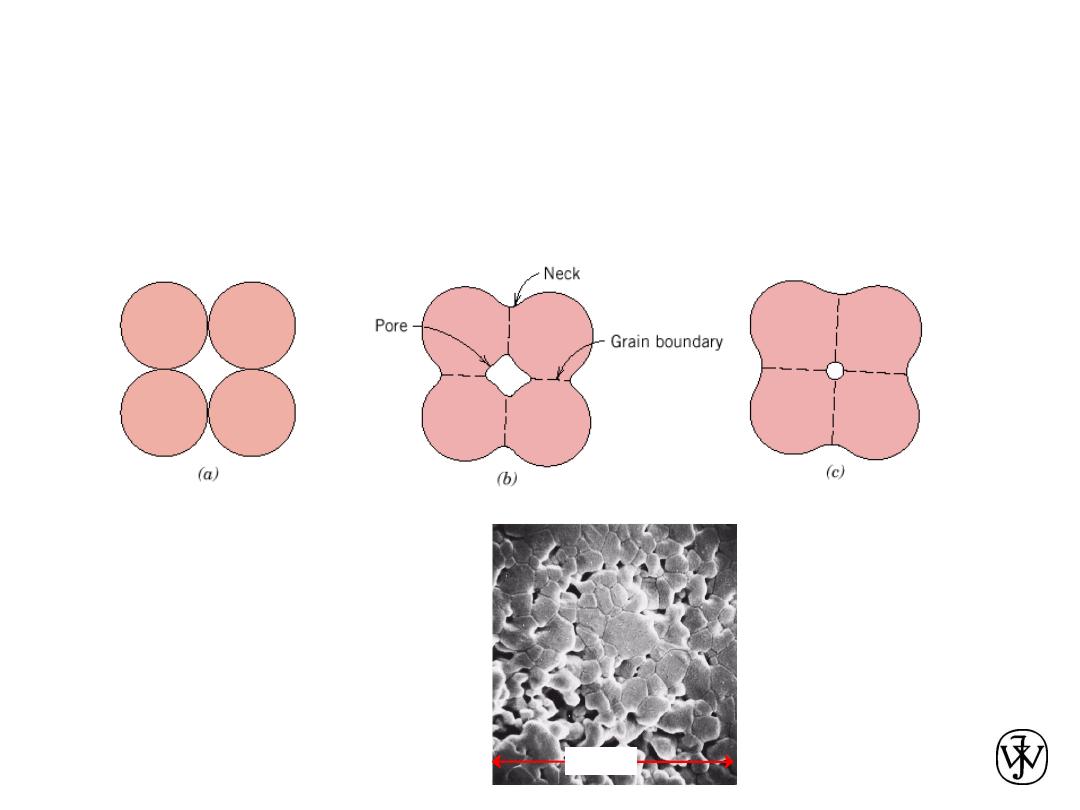
Chapter 13 - 23
Sintering
Adapted from Fig. 13.16,
Callister & Rethwisch 8e.
Aluminum oxide powder:
-- sintered at 1700
ºC
for 6 minutes.
Adapted from Fig. 13.17, Callister
& Rethwisch 8e. (Fig. 13.17 is from
W.D. Kingery, H.K. Bowen, and
D.R. Uhlmann, Introduction to
Ceramics, 2nd ed., John Wiley and
Sons, Inc., 1976, p. 483.)
15
m
m
Sintering
occurs during firing of a piece that has
been powder pressed
-- powder particles coalesce and reduction of pore size
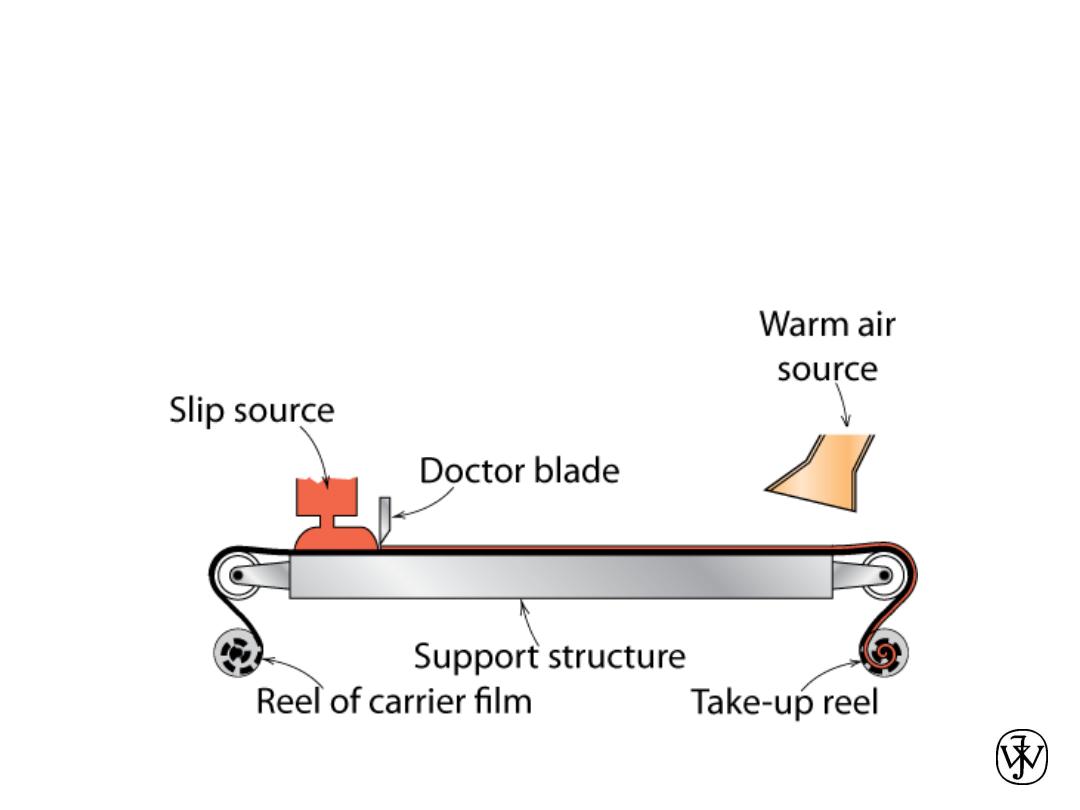
Chapter 13 - 24
Tape Casting
• Thin sheets of green ceramic cast as flexible tape
• Used for integrated circuits and capacitors
• Slip
= suspended ceramic particles + organic liquid
(contains binders, plasticizers)
Fig. 13.18, Callister &
Rethwisch 8e.
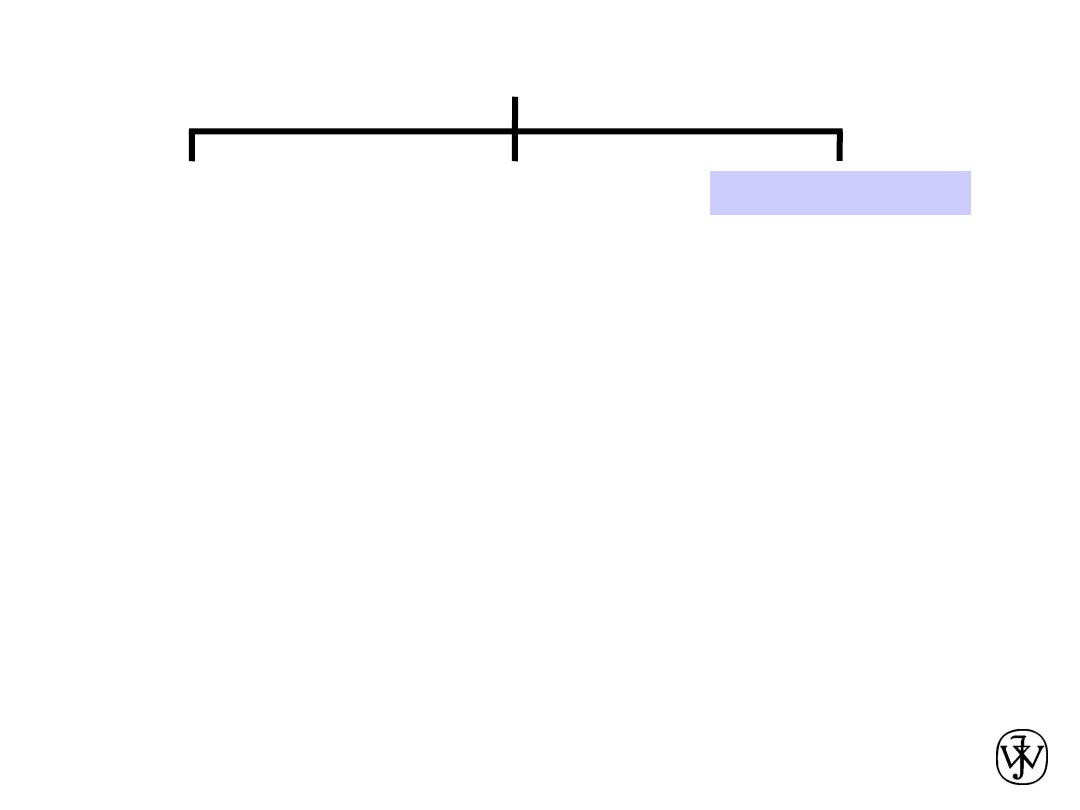
Chapter 13 - 25
• Hardening of a paste – paste formed by mixing cement
material with water
• Formation of rigid structures having varied and complex
shapes
• Hardening process – hydration (complex chemical
reactions involving water and cement particles)
Ceramic Fabrication Methods (iii)
GLASS
FORMING
PARTICULATE
FORMING
CEMENTATION
• Portland cement – production of:
-- mix clay and lime-bearing minerals
--
calcine (heat to 1400ºC)
-- grind into fine powder

Chapter 13 - 26
•
Categories of ceramics:
-- glasses
-- clay products
-- refractories
-- cements
-- advanced ceramics
• Ceramic Fabrication techniques:
-- glass forming (pressing, blowing, fiber drawing).
-- particulate forming (hydroplastic forming, slip casting,
powder pressing, tape casting)
-- cementation
• Heat treating procedures
-- glasses
—annealing, tempering
-- particulate formed pieces
—drying, firing (sintering)
Summary
